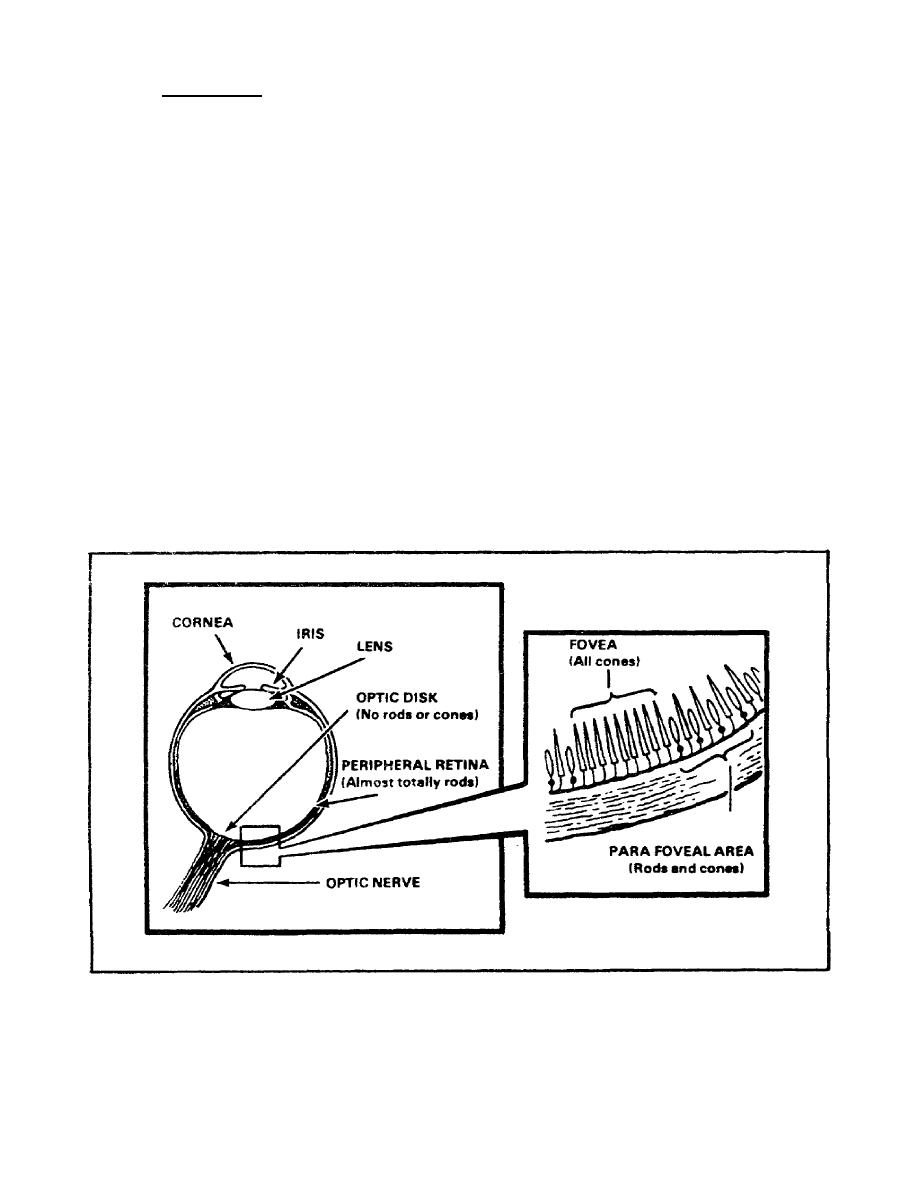
d. Presbyopia. Presbyopia is the inability to accommodate and focus on
near objects. It is a normal aging process where the ability to accommodate
for near objects is reduced gradually, beginning in the early teens. At
approximately 40 years of age, the eyes are unable to focus at the normal
reading distance and reading glasses are needed to assist in focusing.
Additionally, any reduction in illumination interferes with depth of focus
and accommodation ability.
3.
EYE ANATOMY AND PHYSIOLOGY
The retina (camera film) contains both retinal rods (rods) and cell
cones (cones). The cones are used principally for vision during periods of
high illumination (daylight) and the rods are used principally for vision
during periods of low illumination. The differing eye characteristics
between day vision and night vision are due in part to the distribution of
the rods and cones. Notice in Figure 5 that the center of the retina, the
fovea centralis (fovea), contains only cones. The concentration of cones
decreases and the concentration of rods increases as you move to the
peripheries of the retina which are almost totally rods. Also notice that
at the point the optic nerve enters the eye (optic disc) there are neither
rods nor cones. This optic disc creates a day blind spot which is
compensated for by the fact that we have two eyes with overlapping fields of
view. However, the fact that we have two eyes does not compensate for the
night blind spot that is created by the fovea which has only cones and no
rods.
Figure 5.
Anatomy of the eye.
14


 Previous Page
Previous Page
